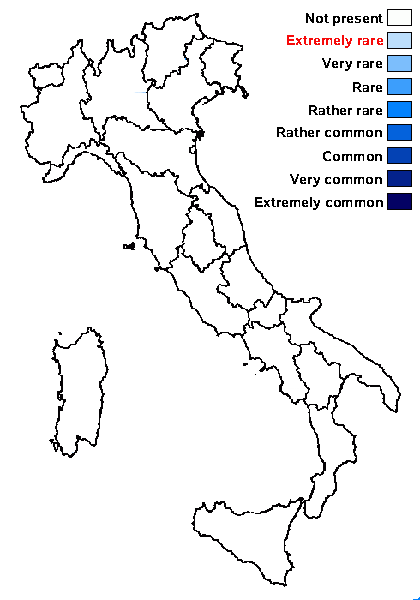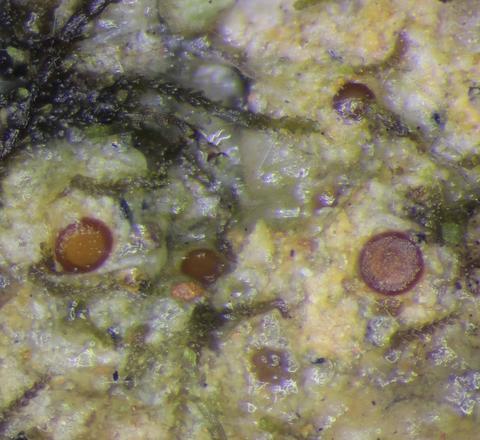Absconditella celata Döbbeler & Poelt
Herzogia, 4, 3-4: 364, 1977
Synonyms:
Distribution:
Description: Thallus crustose, inconspicuous, resembling free-living algal films. Apothecia short-lived, semi-immersed to broadly sessile, pale red-brown when dry, translucent when moist, round, 0.05-0.1 mm across, with a concave disc and a scarcely raised, entire proper margin. Proper exciple red-brown, 7-16 µm wide in lower part, up to 30 µm wide in upper part, of conglutinated, parallel hyphae; epithecium indistinct, colourless; hymenium colourless, (60-)80-100 µm high, I+ yellowish, K/I-; paraphyses dense, slender, indistinctly septate, simple or forked, irregularly broadened at tips; hypothecium very thin, colourless. Asci 8-spored, long-cylindrical, thin-walled, the upper part with a distinct, K/I- apical dome penetrated by a long, narrow tube extending from the endoascus. Ascospores 3-septate, hyaline, fusiform, tapering at both ends, 15-16 x 6-7 µm, with very thin walls and septa. Photobiont chlorococcoid. Spot tests: thallus K-, C-, KC-, P-. Chemistry: without lichen substances.Note: on wood or on Sphagnum, known from Northern, Central and Western Europe, this easily overlooked species should be looked for also in the Italian Alps.
Growth form: Crustose
Substrata: lignum, soil, terricolous mosses, and plant debris
Photobiont: green algae other than Trentepohlia
Reproductive strategy: mainly sexual

Predictive model
Growth form: Crustose
Substrata: lignum, soil, terricolous mosses, and plant debris
Photobiont: green algae other than Trentepohlia
Reproductive strategy: mainly sexual

Predictive model


